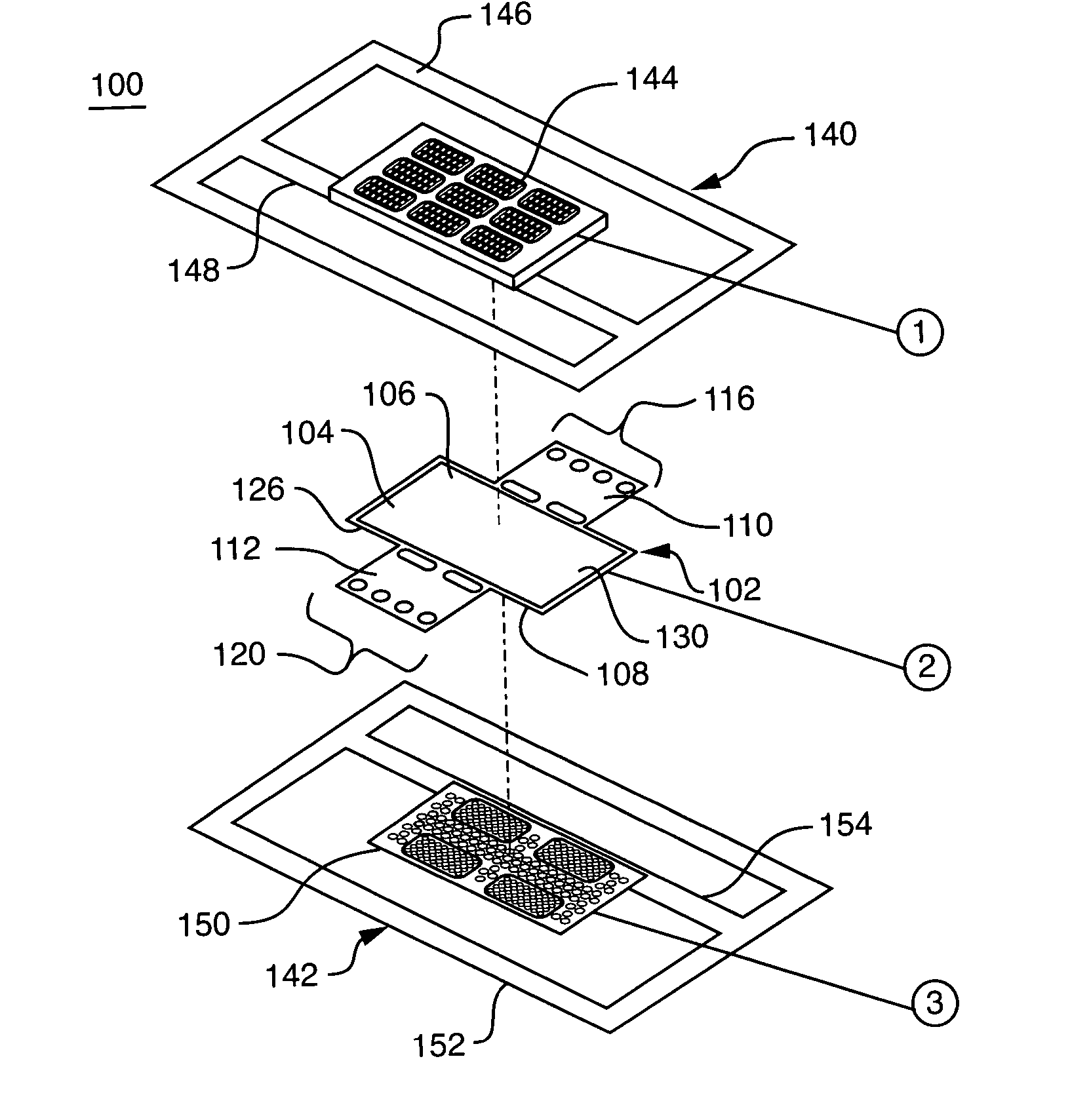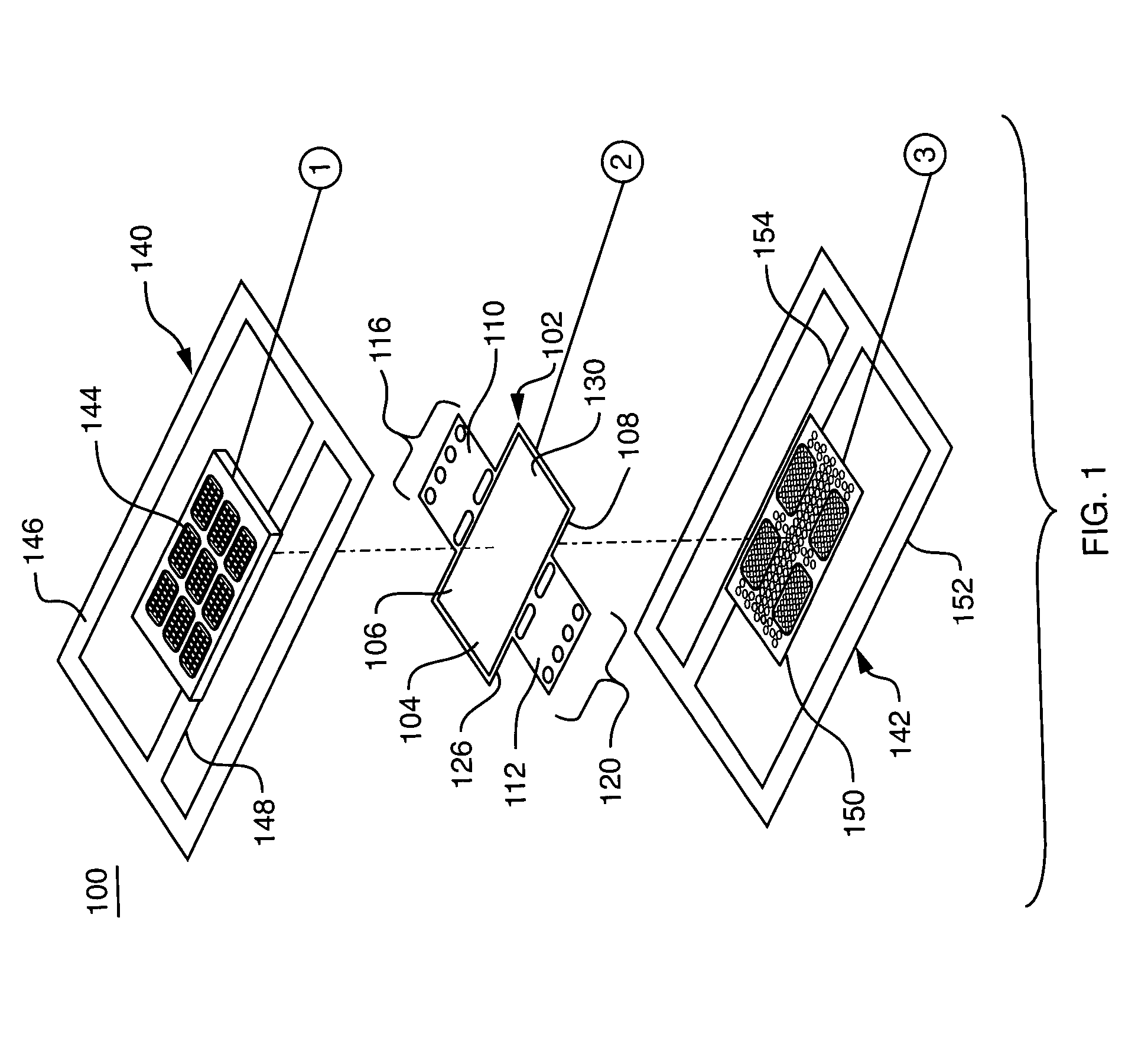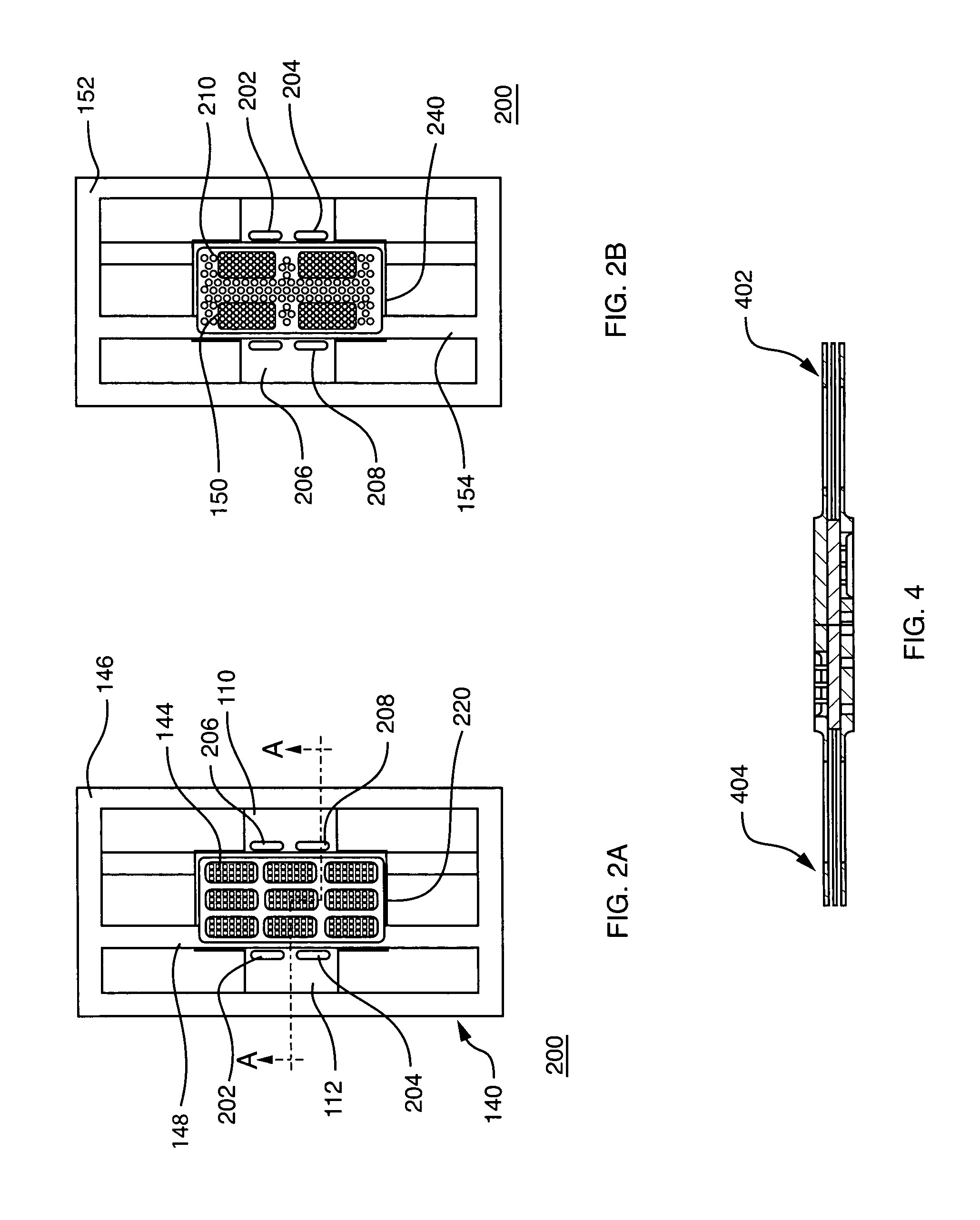Method of manufacturing a fuel cell array and a related array
- Summary
- Abstract
- Description
- Claims
- Application Information
AI Technical Summary
Benefits of technology
Problems solved by technology
Method used
Image
Examples
Embodiment Construction
[0036]FIG. 1 is an exploded perspective view of a lead frame assembly and other components of the fuel cell fabricated in accordance with one aspect of the invention. More specifically, the lead frame assembly 100 includes a membrane electrode assembly (MEA) 102. The MEA 102 typically includes a catalyzed membrane electrolyte 104, which may include a protonically conductive, electronically non-conductive membrane. One material that may be used for the catalyzed membrane, which is commercially available is NAFION®, a registered trademark of E.I. Dupont de Nemours and Company, a cation exchange membrane based on a polyperflourosulfonic acid in a variety of thicknesses and equivalent weights. The membrane is typically coated on each of its major surfaces with an electrocatalyst such as platinum or a platinum / ruthenium mixture or alloyed particles (not shown). Thus, it is referred to herein as the “catalyzed membrane electrolyte, or the “catalyst coated membrane” (CCM). One face of the ...
PUM
| Property | Measurement | Unit |
|---|---|---|
| Flow rate | aaaaa | aaaaa |
| Moldable | aaaaa | aaaaa |
Abstract
Description
Claims
Application Information
 Login to View More
Login to View More - R&D
- Intellectual Property
- Life Sciences
- Materials
- Tech Scout
- Unparalleled Data Quality
- Higher Quality Content
- 60% Fewer Hallucinations
Browse by: Latest US Patents, China's latest patents, Technical Efficacy Thesaurus, Application Domain, Technology Topic, Popular Technical Reports.
© 2025 PatSnap. All rights reserved.Legal|Privacy policy|Modern Slavery Act Transparency Statement|Sitemap|About US| Contact US: help@patsnap.com



